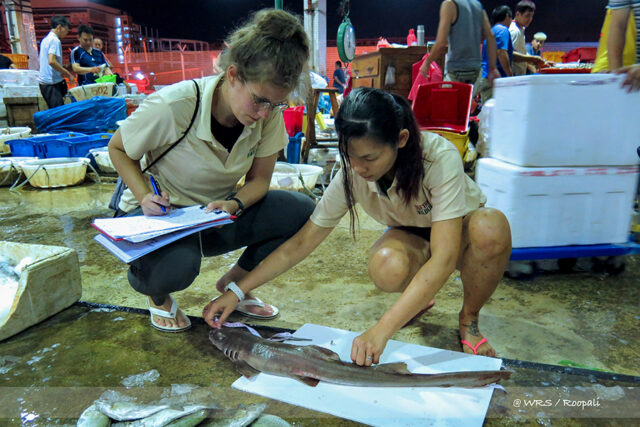The first person that came out from my mind when I was thinking of Shark conservationists in Singapore is Kathy Xu. I know her through her ecotourism project – ‘The Dorsal Effect’.
She hesitates to call herself a shark conservationist as she have no academic background in the science of oceanography and sharks.
But according her friend ,Naomi Clark-Shen, she said, “Kathy is 100 percent a shark conservationist! You don’t need ‘educational training’ in something to pursue it as a career or give yourself a ‘title’ — and Kathy has done more for shark conservation than most people trained in marine science have.”
Naomi reached out to Kathy about 5 years ago, to see if she could help out with her Dorsal Effect trips as she have always loved sharks. Sure enough, a few weeks later She was with Kathy in Lombok helping with one of her school trips. Kathy kick-started her career in shark conservation and She is forever grateful for that.
Here is our nature talk with Kathy and Naomi.
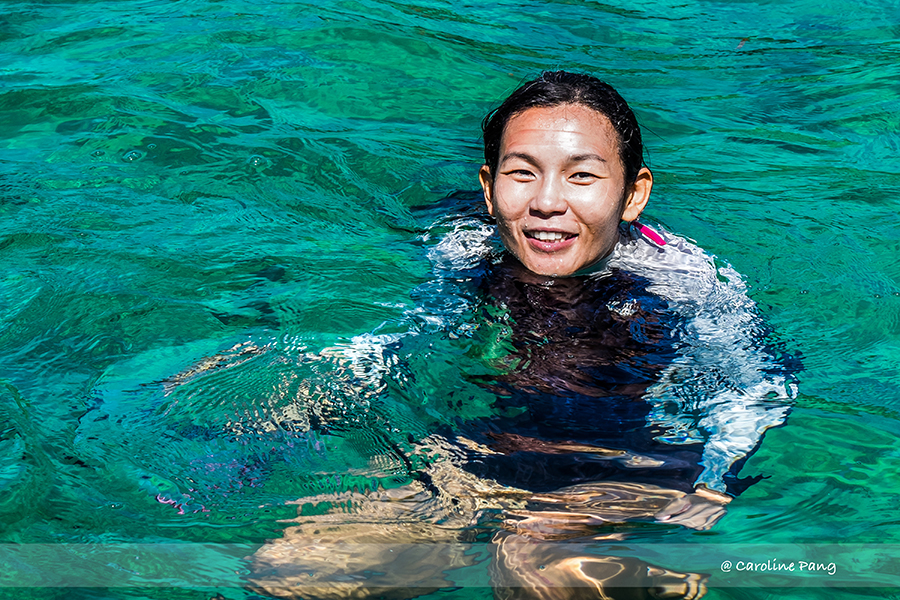
Kathy, what’s the tipping point that make you decide to become a ‘shark conservationist’?
I have a tipping point for when I decided I wanted to do more for sharks, and that was after my experience responsible snorkelling with whale sharks in Ningaloo Reef back in 2011.
But I don’t think I will ever be comfortable enough to call myself a shark conservationist given I have no academic background in the science of oceanography and sharks. I guess I do what I can with what I learn along the way as far as I possibly can!
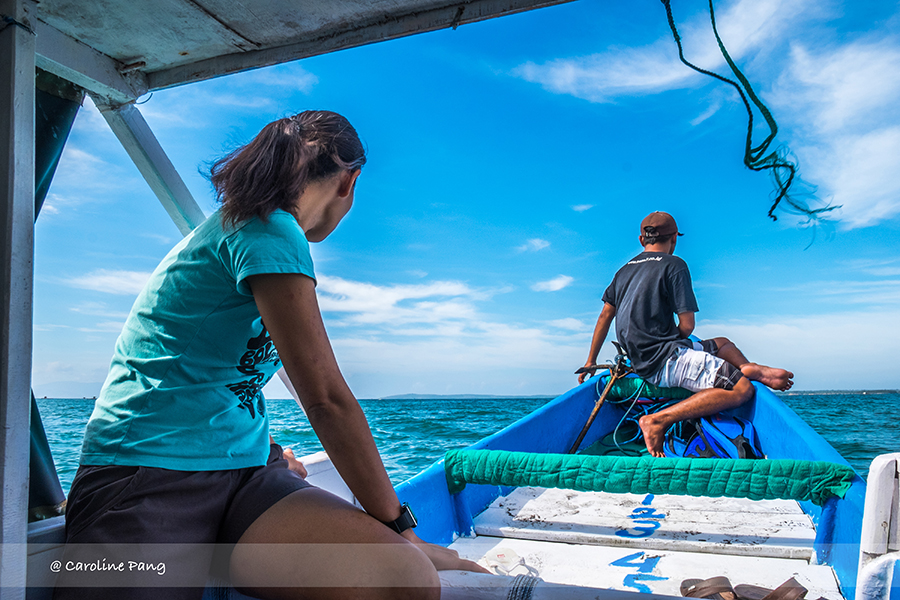
Can you tell us more about ‘The Dorsal Effect’?
It is an ecotourism business that aims to provide alternative livelihood to shark fishermen in Lombok through school and individual tourists trips, of which the places to go snorkelling are decided by the local fishermen who have expert knowledge on the waters.
The mission of this ecotourism is to prevent shark-fishing by providing alternative income for the local tour guide that was a former shark fisher to make money from ecotourism instead of shark hunting.
Given how the pandemic is crippling tourism, The Dorsal Effect is not spare either but we are just suspending operations for now and riding things out while taking one day at a time.
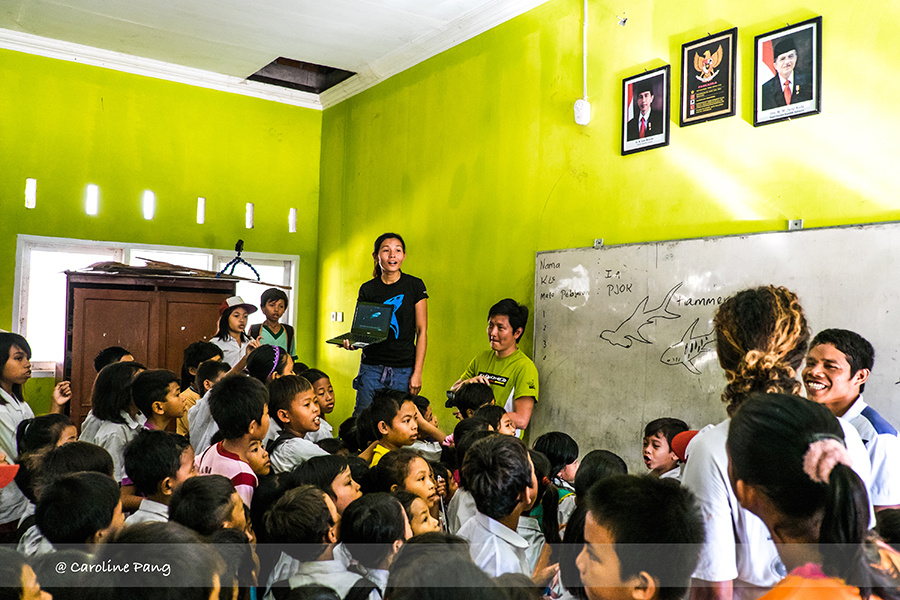
Can you give us a better understanding about sharks, as we identify shark as a scary species ( movies ) and also heard some news about sharks attacking humans.
I think most of us grow up with thriller movies like Jaws, which tends to typify sharks as large, scary and consisting only of one species, the Great White Sharks. Perhaps movies like Jaws have a place in helping people be humbled and awed by the magnificence of larger species sharks like the Great Whites. Sometimes even fear may not be such a bad thing in teaching people to respect nature. But I guess when humans allow these movies to instil in them a perceived need to conquer the perceived ferociousness of sharks, that could be very worrying. At the end of the day, I hope that people will see that there are several aspects and dimensions (and even species!) of sharks, and appreciate the complexity, rather than allowing one single dominant aspect to scare the hell out of themselves.
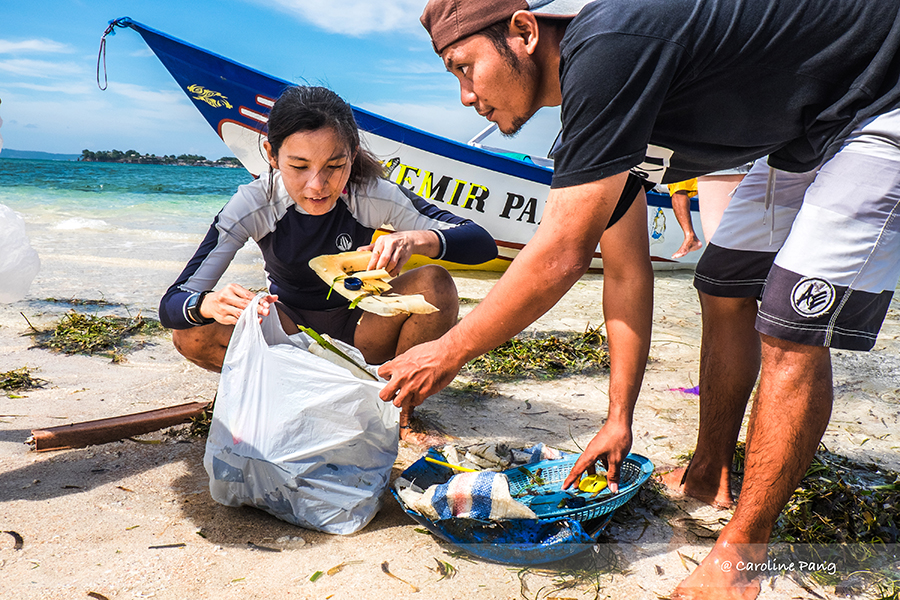
Can you tell us some tips for us that we can do in our daily life to save environment, especially the ocean?
I think it starts from raising your children well. When you instil in them a sense of community spiritedness and that they should not do nasty things even when no one is watching, eg constantly reminding them not to dump anything big or small scale that does not already belong in the ocean, whether or not anyone is watching, can go a long way in their development into adulthood.
I feel that once a sense of shared responsibility and community spiritedness is instilled in all, everyone would naturally know that right things to do daily for the good of the oceans and the environment.
What’s your view of a citizen scientist?
I love the idea and I think everyone should be a citizen scientist, but it has to be coupled with respect and awe for nature and science data collection. It may not always be easy to find the balance but if more and more citizens are involved in collecting data on nature, maybe we will know better how to serve and protect it.
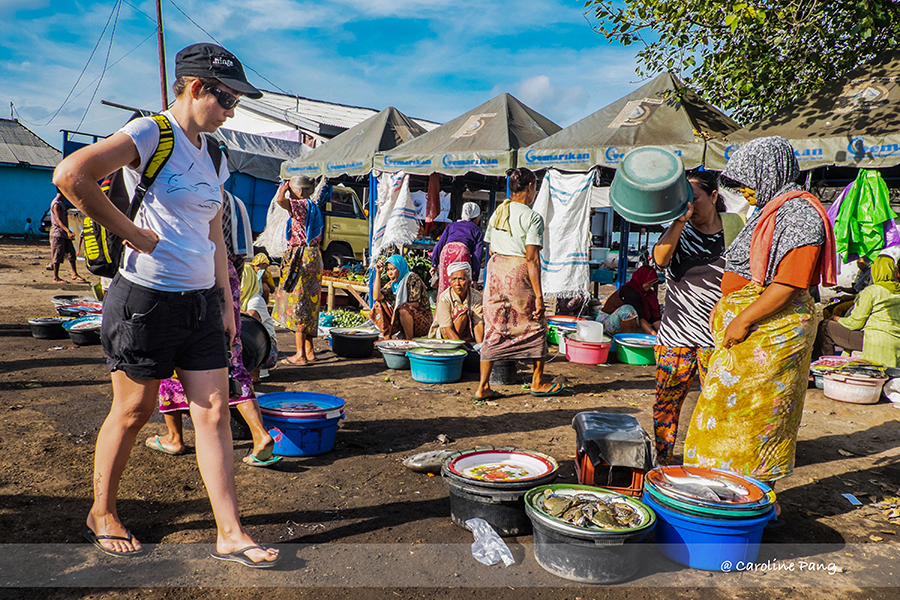
Naomi, How do you do your research on sharks in Singapore?
We go to Singapore’s fishery ports to collect data on the sharks and stingrays that come into Singapore – from Indonesia, Malaysia, Thailand, or local waters in Singapore. We get data such as their species, size and sex. We also talk to fish merchants and other stakeholders to understand where these sharks and stingrays come from, how they are caught, and where they will end up in Singapore (i.e. who will eat them).
I also do a lot of dissection work on already-caught sharks and stingrays to understand more about their biology and ecology, such as what they eat, how many babies they have, how quickly they grow, etc. All of this information is vital to conserve and manage them.
This research (where we survey Singapore’s fishery ports ) is funded by Wildlife Reserves Singapore.
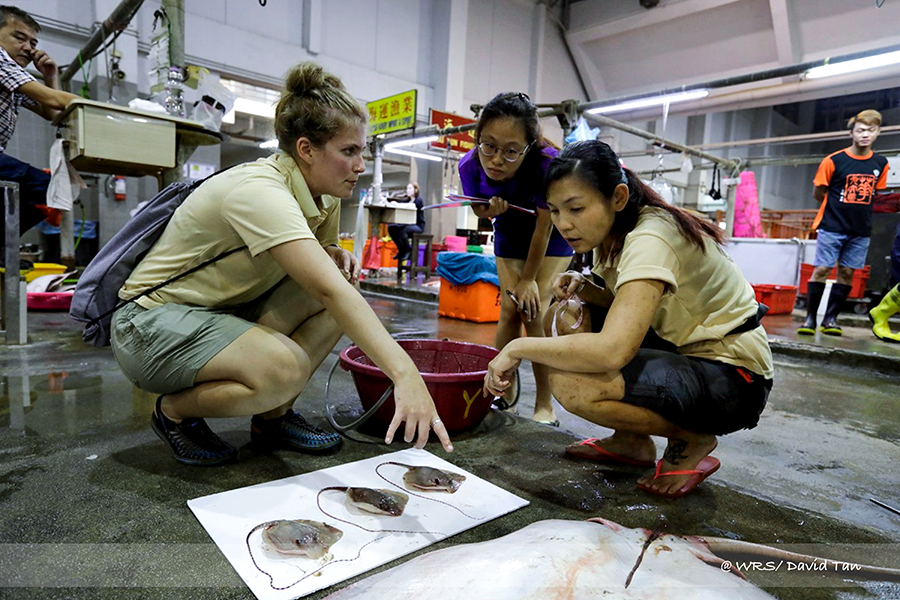
What sharks are found in Singapore?
Quite a few! Including the blacktip reef sharks, bull sharks, bamboo sharks, cat sharks, blackspot sharks (different to blacktip reef sharks), and even whale sharks have been seen in Singapore waters.
As you are also doing research on stingrays in Singapore, in some nature places like MacRitchie and Lower Pierce reservoir, we can easily spot the Motoro stingray. Is that a native species?
No, the motoro stingray is a freshwater species found in rivers in South America. They are imported to Singapore for the aquarium (pet) trade, and are then released into our wild areas.
Any threatened or vulnerable species of stingray spotted in Singapore?
Yes! These include the whitespotted whipray (Endangered), ocellate eagle ray (Endangered), Bluespotted fantail ray (Near Threatened), honeycomb/leopard whipray (Endangered), and Bluespotted maskray (Not Assessed – which is just as concerning as those that are listed as Endangered, because it means we do not know how threatened they are).
We can do our part to save the ocean and sharks by trying not to dump anything into the ocean; to avoid consuming shark-fins, and joining community movements to clean our beaches.
This is one of the motivational words from Kathy that inspired me to maintain this page SingaporeGeographic.
“If you believe in something, don’t ever give up. The journey will be hard and what you need is humility and resilience. But if it’s for a positive cause, the outcome and satisfaction you get will be more than worthwhile.”
Kathy Xu
Volunteer and advocate for betterment of the environment, advocate for marine and shark conservation through sustainable and ethical ecotourism business. Part time lecturer and story writer, founder of an ecotourism business, The Dorsal Effect.
Naomi Clark-Shen
Freelance consultant, working on a variety of projects in conservation (primarily fisheries research), content production and writing. She is currently doing a Ph.D on shark and ray fisheries and biology in Southeast Asia but continue consultancy projects on the side. Above all, She is passionate about animal welfare and compassionate living.
The Series of Lombok Photos above was taken by Caroline Pang











